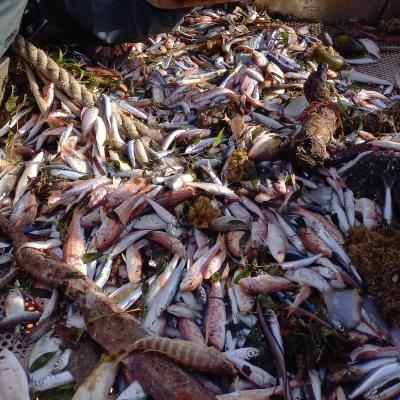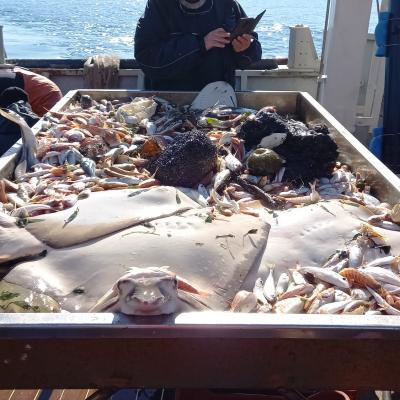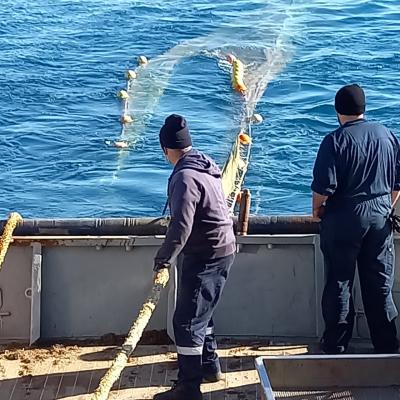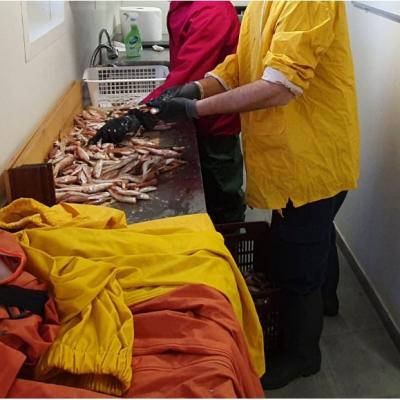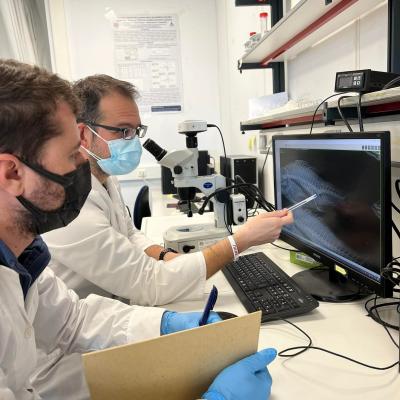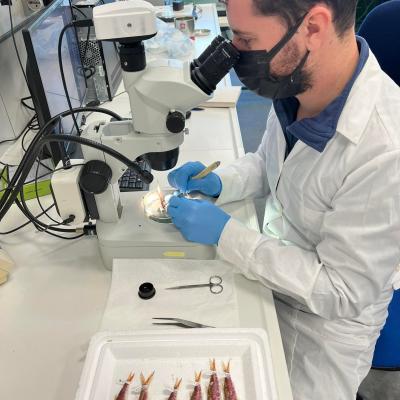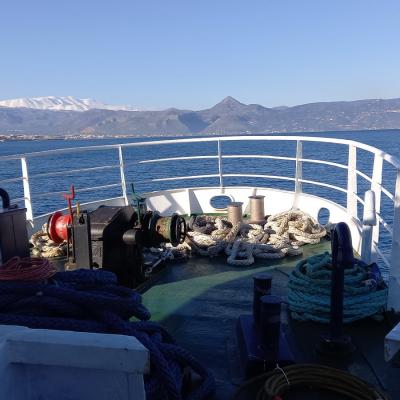Proposal 2: LeFish
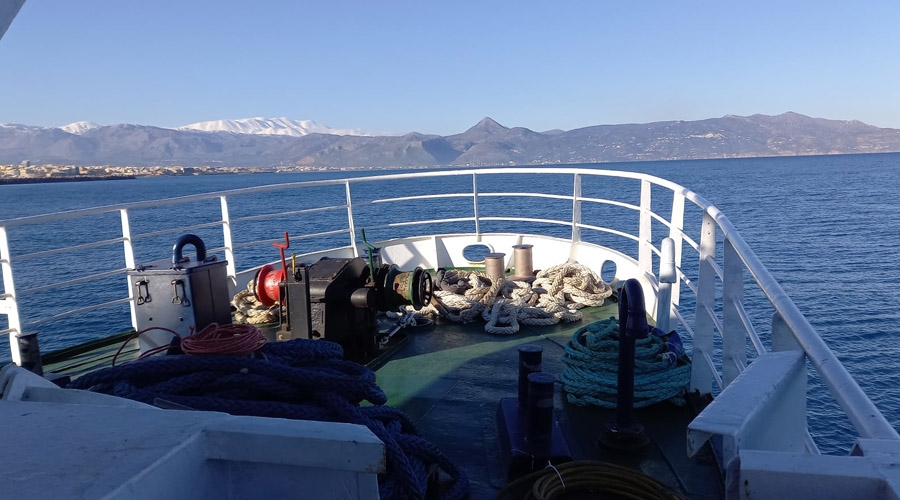
Study on the degree of adaptation of Lessepsian migrants to Cretan coastal ecosystems
When: January 2022
Where: Gulf of Heraklion
What: Experimental bottom trawl fishing for collecting alien and indigenous fish species
Who: Laboratory of Marine Biology and Fish Biology, Department of Biology, University of Crete
Aim: In the LeFish research action (funded by "RePhil"), the R/V PHILIA was utilized to collect demersal fish samples using an experimental bottom trawl. The aim of the LeFish cruise was to collect alien species of the family Mullidae and compare them with indigenous species of the same family, such as the red mullet and striped-red mullet.
The postdoctoral researchers and students from the University of Crete that participated in LeFish had the opportunity to cooperate with experienced scientists from H.C.M.R. and acquire valuable knowledge on identifying and sorting demersal fish species and invertebrates onboard the research vessel. From the fish samplings, two mullid species were selected for analysis, namely, the native species Mullus barbatus (red mullet) and the alien species Upeneus pori.
The scientific aim of LeFish was to explore, for the first time, the use of (a) otolith bilateral asymmetry, and (b) incidence/frequency of skeletal abnormalities, as proxies for evaluating the adaptation of invasive species (like Upeneus pori) to their new (foreign) habitats.
In the laboratory, the fish were first photographed to assess the incidence of morpho-anatomical abnormalities. Subsequently, the specimens were radiographed (X-rays) for the examination of their skeleton. The otoliths (two small calcified structures of the inner ear) were extracted from the fish heads and photographed. The digitized outline of each otolith was then used to measure morphological characters of size and shape. These characters will be further analyzed in order to calculate otolith bilateral asymmetry (fluctuating asymmetry), an index of development stress.
By comparing alien versus autochthonous species, we expect to acquire new insights into the invasive potential of migrants and the chances of establishing abundant populations in the new environments
Aim: In the LeFish research action (funded by "RePhil"), the R/V PHILIA was utilized to collect demersal fish samples using an experimental bottom trawl. The aim of the LeFish cruise was to collect alien species of the family Mullidae and compare them with indigenous species of the same family, such as the red mullet and striped-red mullet.
The postdoctoral researchers and students from the University of Crete that participated in LeFish had the opportunity to cooperate with experienced scientists from H.C.M.R. and acquire valuable knowledge on identifying and sorting demersal fish species and invertebrates onboard the research vessel. From the fish samplings, two mullid species were selected for analysis, namely, the native species Mullus barbatus (red mullet) and the alien species Upeneus pori.
The scientific aim of LeFish was to explore, for the first time, the use of (a) otolith bilateral asymmetry, and (b) incidence/frequency of skeletal abnormalities, as proxies for evaluating the adaptation of invasive species (like Upeneus pori) to their new (foreign) habitats.
In the laboratory, the fish were first photographed to assess the incidence of morpho-anatomical abnormalities. Subsequently, the specimens were radiographed (X-rays) for the examination of their skeleton. The otoliths (two small calcified structures of the inner ear) were extracted from the fish heads and photographed. The digitized outline of each otolith was then used to measure morphological characters of size and shape. These characters will be further analyzed in order to calculate otolith bilateral asymmetry (fluctuating asymmetry), an index of development stress.
By comparing alien versus autochthonous species, we expect to acquire new insights into the invasive potential of migrants and the chances of establishing abundant populations in the new environments



